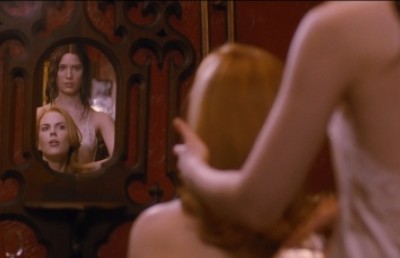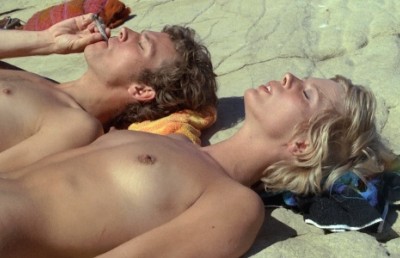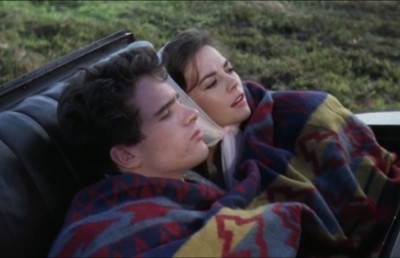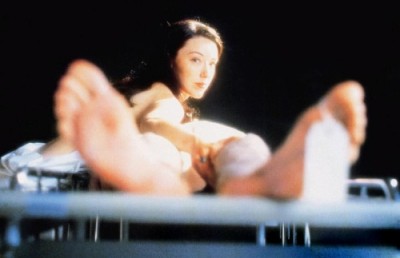Like a Charm
Movies That Put a Warm Smile on Your Face (but not sex)
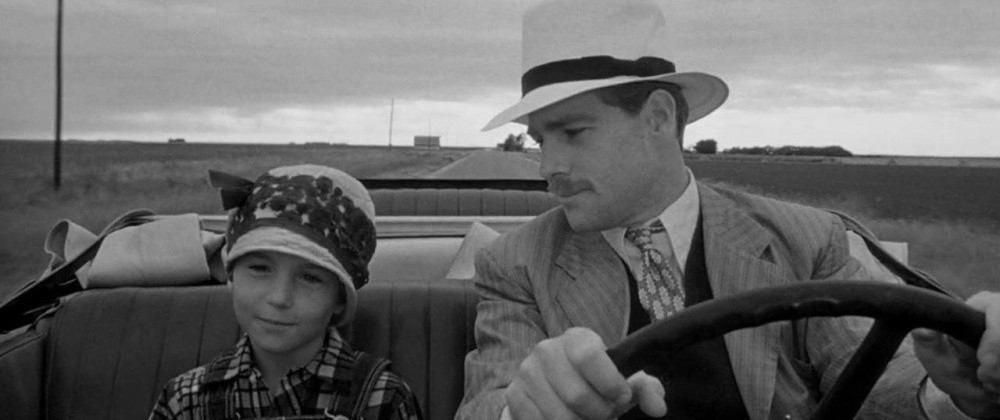
Here are three sentences with which I unequivocally agree:
Roxanne is one of the most beautiful, elating romantic comedies ever made in this country. It makes you feel mysteriously, unreasonably happy, as if you were watching colors being added to a sunset. The glow from this film stays with you; it has a radiance like no other movie (Rainer 465).
Those words were penned by critic Peter Rainer, and they refer to the 1987 movie Roxanne (Fred Schepisi, 1987), written and starring Steve Martin. When I first happened upon them in a collection of Rainer’s writing, my heart leapt with joy. Here, I realized, was a fellow traveler, someone who cherished this adorable little movie just as much as I do. And yet, as you surely gleaned from the passage above, Rainer doesn’t merely like the movie because it’s well made – though it certainly is, buttressed by a superlative cast and a screenplay bursting with wit – but because there is something inescapably, ineffably charming about it.
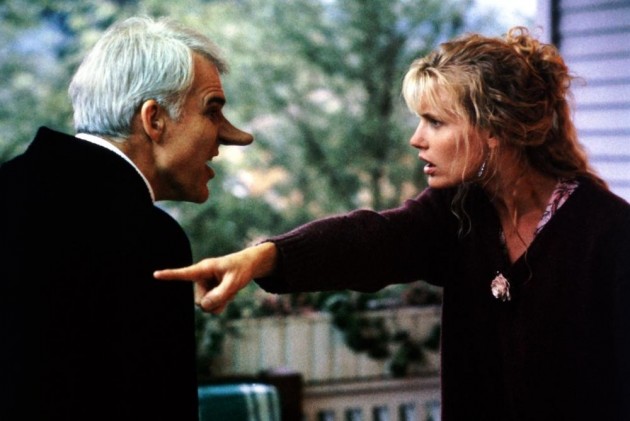
Roxanne : Modern charm
The movie is an updating of Edmond Rostand’s famous 1897 play, Cyrano de Bergerac, with Steve Martin playing the lovelorn hero (renamed C.D. for the movie) and Daryl Hannah playing the eponymous Roxanne. The setting is moved to an off-season ski resort, a quirky alpine aerie, where the streets, like the lovers’ intentions, bisect at odd angles. C.D. is both physically brave and linguistically dexterous, besting two men with a tennis racket in a street fight and a third with a flurry of bon mots aimed at his own oversized proboscis (“What happened? Did your parents lose a bet with God?”). His mortal shame is that very nose, which keeps him from confessing his love to Roxanne. She soon falls for Chris (Rick Rossovich), the hunky new firefighter in town. Chris is painfully shy and, unlike C.D., not terribly quick witted, so C.D. helps the younger, handsomer man woo Roxanne by acting as his wordsmith. Naturally, misunderstandings ensue.
What makes the film so magical isn’t the plot, which, as you can see, is simply a standard romantic triangle, but rather the film’s mien. Everything about it is touched with a sense of enchantment, right down to the town itself, which, thanks to the photography, seems to exist in a perpetual summer twilight. Most winning of all is C.D., who is the epitome of grace. When Roxanne locks herself out of her house, he flings himself up to the second floor like an acrobat, swinging off of pipes and balancing on gables with his hands casually tucked in his pockets. Like the characters Chaplin and Keaton played in the nineteen-twenties, C.D. refuses to relinquish his savoir-faire, no matter how the world humiliates him, and that’s what makes him so endearing. Another man in his shoes would have sabotaged Chris’s efforts to romance Roxanne, but C.D. genuinely believes his own chances with her are nil, and so he uses Chris as his avatar, spilling his heart to her in letters signed by another man. He’s honourable even in his deceit, aiding a fellow lover in need, while also courting Roxanne the only way he knows how. The movie, though, is democratic enough to cast a kindly eye on all of the town’s inhabitants, from the gossipy old ladies who wonder if C.D.’s nose correlates with any other elongated body parts to Andy (Michael J. Pollard), an elfin fireman with unexpected pugilistic prowess and a secret fancy for French existentialism, to Chris, who, we learn, can actually be quite a smooth talker once he’s paired with a lover in his own intellectual weight division.
I think this all quite wonderful, and was thrilled to discover that Rainer does, too. And I’m willing to bet that, even if you haven’t seen Roxanne or if you find its particular brand of romance cloying, you have some idea of what I’m talking about when I say that I think it’s charming. We can all think of movies that, at one point or another, cut through our cynical shields and pierced our hearts with their sweetness. The more sentimental among us probably experience this quite often; the more pessimistic not so much. However, I reckon you will agree with me when I say that certain films seem to be particularly well crafted for this task. Something about them radiates joy. Something about them lightens us whenever we watch them. Since I’m aware of no name for such a genus of film, I have, for years now, simply taken to calling them charming.
How do you spot a charming movie? Well, in case my description of Roxanne failed to make it clear, here is a list, by no means comprehensive, of movies that I find charming. (I hope you pardon the length, but the necessity for such prolixity will be apparent in a moment.)
The Kid (Charlie Chaplin, 1921)
Le million (René Clair, 1931)
It Happened One Night (Frank Capra, 1934)
The 39 Steps (Alfred Hitchcock, 1935)
The Adventures of Robin Hood (Michael Curtiz, William Keighley,1938)
Ninotchka (Ernst Lubitsch, 1939)
The Philadelphia Story (George Cukor, 1940)
I Know Where I’m Going! (Michael Powell, Emeric Pressburger, 1945)
A Matter of Life and Death (Michael Powell, Emeric Pressburger, 1946)
The Bishop’s Wife (Henry Koster, 1947)
Jour de fête (Jacques Tati, 1949)
The African Queen (John Huston, 1951)
The Quiet Man (John Ford, 1952)
Rear Window (Alfred Hitchcock, 1954)
Paper Moon (Peter Bogdanovich, 1973)
Heaven Can Wait (Warren Beatty, Buck Henry, 1978)
Sixteen Candles (John Hughes, 1984)
The Princess Bride (Rob Reiner, 1987)
Bull Durham (Ron Shelton, 1988)
Say Anything . . . (Cameron Crowe, 1989)
Groundhog Day (Harold Ramis, 1993)
Il Postino (Michael Radford, 1994)
Four Weddings and a Funeral (Mike Newell, 1994)
Tin Cup (Ron Shelton, 1996)
Almost Famous (Cameron Crowe, 2000)
Pride and Prejudice (Joe Wright, 2005)
Away We Go (Sam Mendes, 2009)

Much Ado About Nothing: Shakespearean charm
Surely you noticed the preponderance of romantic comedies, which should hardly come as a surprise. Matters of the heart, by their very essence, lend themselves to wit and whimsy, folly and mirth, these being the natural byproducts when the sexes awkwardly attempt to pair off. Just ask Beatrice and Benedick, the protagonists of Much Ado About Nothing , one of Shakespeare’s most charming plays, and the source for a rather charming 1993 screen adaptation starring Emma Thompson as Beatrice and Kenneth Branagh, who also directed the film, as Benedick. Not all charming movies need be romantic comedies. It’s hard to conceive of a more delightful movie than Local Hero (Bill Forsyth, 1983), the tale of an American oil executive sent to Scotland to purchase a town, in toto, for the building of a refinery. The protagonist of the film (Peter Riegert) begins the story alone and ends it alone. Instead of falling in love with another person, he gradually (and, at first, unwillingly) falls in love with the town that he has been sent to acquire for destruction. Naturally, the hamlet in question is about the loveliest little seaside village you’ve ever set your eyes upon, a far cry from the Scotland on view in Trainspotting (Danny Boyle, 1996), which looks like a chemical wasteland even without the help of the petroleum industry. Now, from my description above, you’ve probably already surmised the arc of the story . . . but I must tell you that your supposition is wrong. Local Hero is not the story of the fight to save a pristine landscape from the ravages of corporate greed, and therein lies its genius. Matters that, in another film, would be handled with great solemnity are, in Local Hero, juggled with elegant ease. The townspeople, far from being helpless innocents set upon by rapacious industrialists, are more than eager to sell their slice of heaven and get stinking rich off the proceeds. The tycoon who runs the oil company, on the other hand, turns out to be sweetheart, a starry-eyed dreamer who, in the end, would much rather build an astronomical observatory on the site than a refinery. In other words, the movie, when all is said and done, is another case of much ado about nothing.
If this, too, sound obliquely feminine to you – rather overfull of emotion and rather short on gunfire – and if, further, you’re the rugged masculine type who quivers at the mere thought of wasting two hours watching a romantic comedy, fear not: there are at least a few charming movies for you, as well. Master and Commander: The Far Side of the World (Peter Weir, 2003) comes to mind right away. Like all charming films, it takes place in a world slightly removed from our own (a British naval frigate during the Napoleonic Wars, to be precise) and armored against the travails of everyday life. The filmmakers clearly worked hard to recreate the period in all its dirty and dangerous particulars – the cramped quarters, the blood-slick boards of the operating cabin, the deadly spray of splinters during battle – but this hardly de-romanticizes the film. It is filled with so many thrills, and the heroes do their duty with such sang-froid and gung-ho bonhomie , that you can’t help wishing you were there, too, cutting down Frenchmen with your cutlass. How can you not be charmed by little William Blakeney (Max Pirkis), the fourteen-year-old midshipman who, despite losing an arm in battle, has lost neither his fighting spirit nor his boyish enthusiasm for science? “Perhaps I could combine [my skills] to be a sort of fighting naturalist,” he tells the ship’s doctor, Stephen (Paul Bettany), who makes up half of the film’s central odd couple. The other half is made up by the ship’s captain, Jack Aubrey (Russell Crowe). Stephen, as you might guess, is the thinker; Jack the doer. And their friendly bickering and clash of temperaments is reminiscent of so many other buddy duos: Pryor and Wilder in Silver Streak (Arthur Hiller, 1976), DeNiro and Grodin in Midnight Run (Martin Brest, 1989), and Bridges and Goodman in The Big Lebowski (Joel Coen, 1998). These, incidentally, are all charming movies that any red-blooded male would be proud to watch.
Reading the list of movies above, you doubtless observed that the collection bulges most heavily at the top end – that is to say, in the nineteen-thirties and forties – growing perilously thin in the middle, in the years between the Truman and Ford administrations. I cannot accept that this is merely subjective bias on my part. I grant you, my failure to summon even a single title from the entire decade between 1960 and 1970 (and God knows I’ve tried) may be the result of a gulf in my own cinematic knowledge. But my task is made exponentially harder when the pickings are so slim to begin with. There undoubtedly are charming movies from the nineteen-thirties that I have also failed to account for, and yet when movies like My Man Godfrey (Gregory La Cava, 1936), The Awful Truth (Leo McCarey, 1937), and Bringing Up Baby (Howard Hawks, 1938) are coming out back-to-back-to-back one hardly needs to think at all to start coming up with examples. The whole decade, movie-wise, bubbles with effervescence.
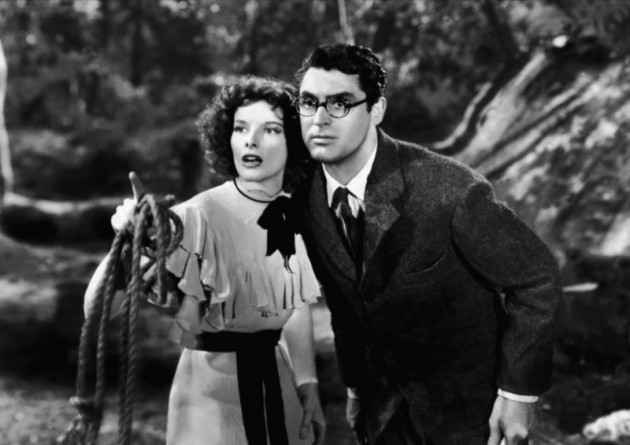
Bringing Up Baby : Classic Hollywood charm
One factor behind this, I’ll wager, is sex, or, rather, its banishment from the silver screen. Having skimmed my list of movies, you must’ve noticed, in addition to the plethora of titles from the thirties and forties, the prevalence of screwball comedies in the bunch. Andrew Sarris famously defined the screwball comedy as a “sex comedy without sex.” (Sarris, 96) Beginning in 1934 – July 1st to be exact – the Hollywood studios were required, under orders from Joseph Breen, to scrub their films of all of all “sexual stimuli,” which, according to the censor, was “harmful to individual morality, subversive to the interests of society, and a peril to the human race.” (Doherty, pp.92-93) (No one, apparently, bothered to tell him how the human race perpetuated its existence.) Rather than remove sex from the screen, the writers, directors, and stars simply disguised it, cloaking it in suggestive repartee, farcical mishaps, and open hostility (read: lust) between the sexes, invariably ending in romance.
Thus was born the screwball comedy, and with it the heyday of charming cinema, for it is this contradictory blend of naiveté and knowing that makes screwball comedies so bewitching. Anyone who’s ever seen Ball of Fire (Howard Hawks, 1941) knows that it is impossible not to be charmed by Gary Cooper, the sweet, innocent sap, as he gets taken for a ride by cynical, seductive Barbara Stanwyck. Played differently, the movie could be a tragedy about lost illusions. Instead, it is Barbara Stanwyck, the wanton gangster’s moll, who ends up losing her cynicism at the hands of her mark. The showgirl imagines she is seducing the virgin, only to get seduced, in turn, by his innocence.
This is not to suggest that sex and charm are incompatible when it comes to the seventh art. There are few films made in the last dozen years as winning as Away We Go, a romantic comedy that begins, happily enough, with a scene of cunnilingus in mid-practice. Bull Durham, likewise, opens with Susan Sarandon’s wonderful soliloquy on the commonalities of her two favorite pastimes, baseball and sex, and you would have to be either a hard-hearted cynic or a single-minded football fan not to be swept away by that film. I would, however, classify sex as an environmental danger to charm in cinema. That is to say, it is not sex that robs movies of their bubbly mirth – just as it is not coal emissions that directly kill Panamanian golden frogs – but, rather, that in a sex-saturated environment screenwriters and directors are less inclined to write the kind of verbal sparring between the sexes or dream up the suggestive visual innuendos that made the films of the thirties and forties so charming. Propriety forbade Madeleine Carroll and Robert Donat from having sex in The 39 Steps, so Hitchcock found an alternative route to intimacy: he handcuffed them together and threw them out onto the Scottish moors. The scene of them wandering together through the fog (and subsequently sharing a bed at an inn) is at once romantic and laden with kinky import. By contrast, modern would-be charmers like My Big Fat Greek Wedding (Joel Zwick, 2002), Something’s Gotta Give (Nancy Meyers, 2003), and The Proposal (Anne Fletcher, 2009) have all their work still ahead of them when it comes to building erotic tension between their leads.
More important than sex and its masking was the innocence of films themselves in cinema’s Golden Age. Audiences, during the Roosevelt years, had a greater appetite for artifice and make-believe in their movies than their counterparts in subsequent years. Social scientists would, no doubt, attribute this to the collective need for escape at the time, first from the Depression and then the war, as theatergoers wished away their troubles beneath the projector’s comforting glow. The result is a higher quotient of fantasy, even in stories of everyday life (as opposed, say, to the Marvel-inspired fantasies of today). All charming movies contain a dash of unreality. It is a necessary (but not sufficient) ingredient if their elixir is to have an effect. They tend to take place in worlds not quite our own, divorced from the troubles of everyday life, whether it be the emerald forest of Sherwood in The Adventures of Robin Hood or the glittering skyline of Manhattan, as seen through Woody Allen’s adoring lens, in any number of movies. Katharine Hepburn’s palatial home in The Philadelphia Story is as unreal as Oz. The painted skylines and echoing exteriors expose the artifice of the sets at a glance. This, however, only adds to the delicious dream quality of the movie. The sight of Hepburn and Jimmy Stewart waltzing on the lip of a moonlit lily pond is more numinous than any depiction or description of heaven that I’ve ever seen.
Needless to say, whimsy and lighthearted escapism were not in high demand in the fifties, sixties, and seventies, which may account for the dearth of charming movies during these years. As the public’s tolerance (nay appetite) for sex and violence on their movie screens increased, and as the Breen Office’s grip on the Hollywood studios weakened, filmmakers, both in the U.S. and abroad, freed from showing the world as we’d like it to be, increasingly sought to portray the world as it is. Realism became the new Holy Grail, an aspiration for filmmakers and a lure for audiences, as movies began rooting in hitherto verboten patches of human experience: drug use (The Man with the Golden Arm [Otto Preminger, 1955]), incest (Through a Glass Darkly [Ingmar Bergman, 1961]), the Holocaust (The Pawnbroker [Sidney Lumet, 1964]), marital antipathy (__Who’s Afraid of Virginia Woolf_ [Mike Nichols, 1966]), homosexuality (Reflections in a Golden Eye [John Huston, 1967]), and graphic bloodshed (The Wild Bunch [Sam Peckinpah, 1969]). Of course, you point out, the period’s not entirely devoid of either escapism or romance. What of The Seven Year Itch (Billy Wilder, 1955), Breakfast at Tiffany’s (Blake Edwards, 1961), and The Sound of Music (Robert Wise, 1965)? But these tend to be desperately, almost pathetically, cheery, as if to reassure viewers, in the most overt manner possible, that there’s still fun, family entertainment out there, in case the glut of realism is getting them down. They’re so icky-sticky with schmaltz that only something as sharp and wry as Dr. Strangelove (Stanley Kubrick, 1964) can cleanse their taste from your palate.
Another factor – perhaps a corollary factor – that depressed the charm market during these years was the scarcity of strong roles for women. It’s true that a robust female presence is not strictly necessary to carry a film into the clouds. Planes, Trains, and Automobiles (John Hughes, 1987) is lifted almost entirely on John Candy’s fleshy shoulders, with nary a woman in sight. And the most insubstantial character in Four Weddings and a Funeral is its female lead, played by Andie MacDowell, but the movie is buoyant enough to make you forget, at least for a hundred and twenty minutes, that half of all marriages end in divorce. But these are exceptions to the rule. The common ingredient in nearly all charming films is a strong-willed woman. Try to imagine The Philadelphia Story without Katharine Hepburn. Ditto The African Queen. Or Rear Window without Grace Kelly, or Bull Durham without Susan Sarandon. Girls count, too, of course. So integral is Tatum O’Neal to Paper Moon that imagining another child in the role (any child, that is, from any era) is an exercise in futility. She quickly hijacks the story from her father, and the rest of the movie dances to her tune.
Invariably, films of this nature skirt sentimentality. I suspect that many people, if asked to compose a list of the movies they find most charming, would leave room on it for Field of Dreams (Phil Alden Robinson, 1989), the heartwarming tale of an Iowa farmer who conjures the ghosts of the 1919 Black Sox by building them a baseball diamond in his cornfield. I wouldn’t dream of it. The film certainly has the otherworldliness of a charming movie, which is rather nicely blended with the banality of our more earthly plane. (The ballplayers simply fade into the field of corn, with no explanation as to where they go when they’re not playing baseball, and no explanation needed.) But the movie is so overly full of schmaltz that any charm it contains gets drowned by the taste of mawkishness. Without pulling apart the entire film, I’ll tug on one loose thread in the storytelling to make my point. You may have noticed that there are no African Americans among the assorted ballplayers who, at the end, gather in Kevin Costner’s field. (The eight Black Sox, remember, invite their ghostly coevals to play, too, so as to make an actual game possible.) This leads to two possible conclusions. Either the afterlife, like Major League Baseball in the first half of the twentieth-century, is segregated, or, even more ominous, black people don’t get to go to heaven. What are we to make of the sight of the African American novelist, played by James Earl Jones, toddling off into the corn with all those Wilson-era ballplayers? Let’s just hope he doesn’t run into Ty Cobb out there.
Which brings up an obvious question: must all charming movies, to earn their title, be good, as well as enchanting? I’m inclined to say yes. Charm, like comedy, is a fragile ornament. Nothing is more likely to shatter it than clumsy handiwork. I submit, as evidence, It’s Complicated (Nancy Meyers), the 2009 film starring Meryl Streep and Alec Baldwin. If any film seeks to lighten your mood, to warm your heart, to endear itself to you for all time, it is this film. It’s one of those pictures where all the extras seem to be smiling in every shot, and the protagonists, though supposedly middle class, have the homes and leisure time of the fabulously rich. The MacGuffin is love . . . or perhaps sex. The premise is this: Jane (Meryl Streep) and Jake (Alec Baldwin), though divorced for ten years, secretly begin having an affair. The complication: Jane has new suitor (Steve Martin), and neither she nor Jake want their kids to find out. In one scene, their three adult children (their oldest is pushing thirty), having indeed found out, appear cuddled together beneath the covers of a king-size bed, their faces drooping with worry, like little lost puppies. It’s that kind of movie.
But is it charming? No. It has amusing moments, a fine stable of players – in addition to the three leads, it boasts Zoe Kazan, John Krasinski, and Caitlin Fitzgerald in supporting roles – with plenty of chemistry between the two principals, and a rather clever premise that, one senses, might have even tickled Ernst Lubitch’s fancy, had he ever thought about making a movie about sex after sixty. But the film is so aggressively winsome that it thwarts its own ambition to charm, like an overly solicitous suitor who’s a bit too eager to refill your drink. For one thing, it’s almost completely white, and I don’t mean only the speaking parts; the extras all seem to have been hired from the same Aryan talent agency. Nobody sweats for a living or really seems to do much work at all. And the constant smiling on the part of the background players really is rather unsettling once you notice it, as though what we’re actually witnessing is an Orwellian dystopia where all emotions, save happiness, are strictly forbidden. Of course, the first two criticisms could equally be applied to Ninotchka and The Philadelphia Story, which perhaps proves that It’s Complicated really is heir to their screwball tradition. The difference is those movies have the good manners not to butt into the storyline to remind you how adorable they are. Neither one, thankfully, has a midnight croissant-making montage where the lovers pull buttered dough across their faces (or anything equivalently cutesy). It’s not charming when you’re being told outright how much you should be charmed. Nothing kills the mood like desperation.
Which is to say that the most charming movies, like the most charming people, beguile us without even seeming to try. For this reason, they can be deceptively simple. It’s hard to think of a film more plotless than Monsieur Hulot’s Holiday (Jacques Tati, 1953) or one more lacking in character arc. A man vacations by the seaside. He strolls on the beach, putters about in his car, demonstrates a wicked serve on the tennis court, dines, dances, sets off a profusion of fireworks, and eventually heads home (or somewhere), as far as we can tell no wiser nor any worse off than when he arrived. And yet, as anyone who has seen the movie knows, it is one of the most captivating films you’ll ever come across, a lovely portrait of the pleasures of summer. Even if you’ve never holidayed on the French coast, you’ll come away from the film feeling as if you have, which is to say that the picture is something of a vacation itself, a sabbatical from the burdens of conversation as much as reality. (The movie has ambient sound but hardly any dialogue, making it closer in relation, if not age, to the films of René Clair than the films of François Truffaut.) Instead, the movie offers us a mélange of sight gags and visual treats: the listless dog who obstructs an entire roadway so he may sleep, the inner tube that inadvertently gets mistaken for a funerary wreath, the paint can that floats back and forth around Hulot in the surf as he puts the finishing details on his skiff. It’s as insubstantial as origami, but it’s utterly charming.
Bibliography
Doherty, Thomas. Hollywood’s Censor: Joseph I. Breen and the Production Code Administration. New York: Columbia University Press, 2007.
Rainer, Peter. Rainer on Film: Thirty Years of Film Writing in a Turbulent and Transformative Era. Solana Beach, Ca: Santa Monica Press, 2013.
Sarris, Andrew. You Ain’t Heard Nothin’ Yet: The American Talking Film, History & Memory, 1927-1949. New York: Oxford University Press, 1998.



